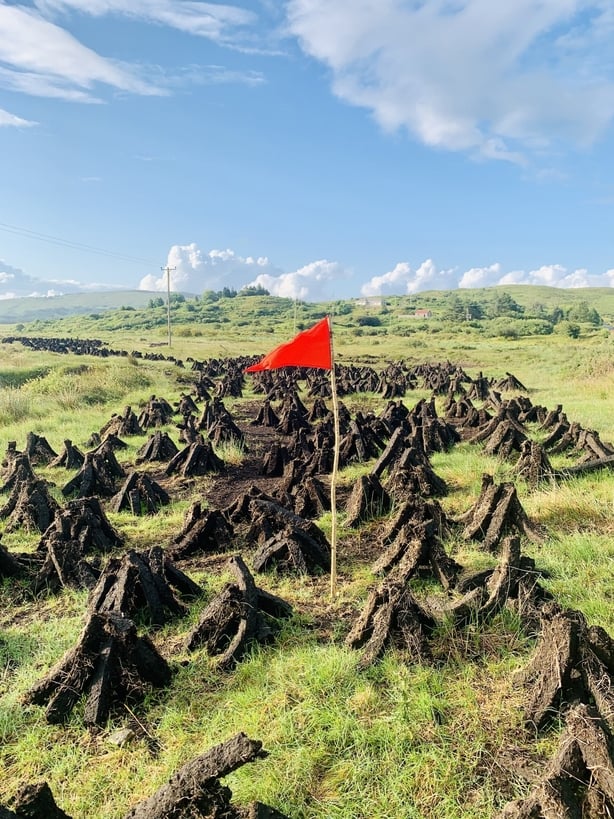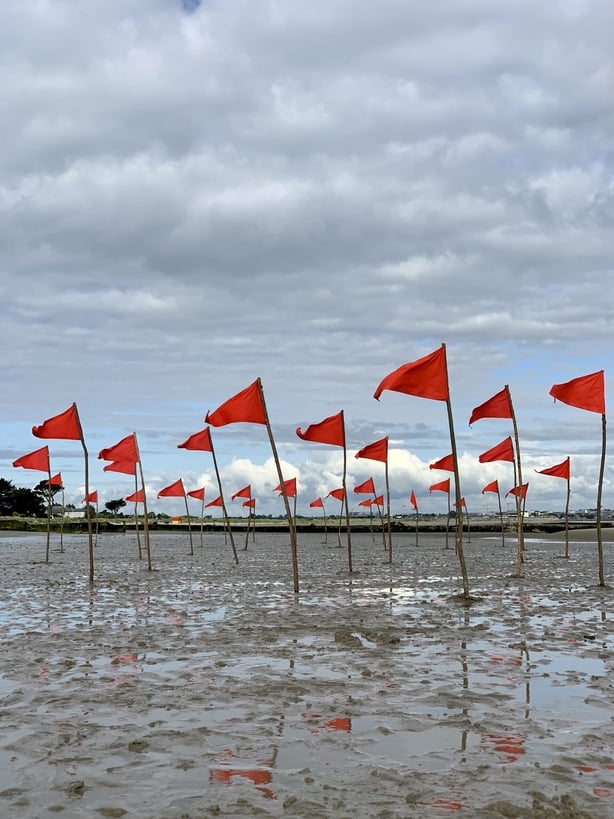Each day, it seems we pass another climate change milestone, and yet another red flag is raised for the world. June 2023 saw the warmest temperatures ever recorded in Ireland. Monday, 3 July 2023, was the hottest day ever recorded globally. Can art offer an appropriate response to a global catastrophe?
Visual artist Fergal McCarthy introduces his new project The Red Flags below.
Many years ago I travelled across Turkey. I was struck by the prevalence of their red, national flag on the top of every hill and mountain, on every rooftop and city skyline, taking on the look of an art installation spread across the country.
I'm a visual artist. Dublin’s Project Arts Centre commissioned me to create a body of work relating to climate change. Over the last two years I’ve done a deep dive into this subject in the Irish context learning about visionary people rewilding their land in Cork and Clare, the country’s first electric bus service in Athlone and a local group in Cabra working together to create a low-carbon community.
Every day, yet another Climate Change milestone seems to be passed and another red flag is raised. Monday, 3 July 2023, was the hottest day ever recorded globally. The mercury hit 41.8C in Rome on July 18, the city’s highest temperature ever. June 2023 was the warmest ever recorded in Ireland leading to a severe maritime heatwave in the waters around these islands.

Climate change is having ever-increasing effects on our habitats and landscape: Giant solar farms are opening in Wicklow and Meath, towering wind farms are popping up across the uplands of Galway and Donegal while several emergency gas-fired power stations are also due to open in Dublin to cope with energy shortages. The sea level is projected to be 35cm higher by 2050 leading to the disappearance of multiple stretches of coastline, particularly in Wexford, Wicklow and Dublin.
Cycling along Dublin’s North Circular Road I began to think about these climate change tipping points, these multiple red flags and my mind drifted back to the giant flags that dot the Turkish landscape.
I started to gather fallen branches to use as poles and with the help of a few nimble-fingered friends we sewed dozens of red flags from organic cotton. Pop-up red flag installations began to appear briefly at beaches across Dublin that are slated to be off the map by 2050.
The red flags travelled to treeless hillsides in Connemara regarded as man-made deserts by ecologists. The flags fluttered in front of ESB gas-fired power plants in Ringsend and North Wall (natural gas creates roughly 22% of global emissions).

The red flags will continue to travel across the country to locations at the coalface of Climate Change including Moneypoint coal-fired power station in Clare, Facebook’s Data Centre in Clonee (data centres consume 18% of Ireland’s metered electricity) and Ireland’s largest dairy farm in Co. Cork (agriculture is the single largest contributor of Irish emissions).
The red flags are activated by the wind, a weather feature affected by climate change and one that increasingly has a pivotal role in divesting the world from fossil fuels (over 50% of Ireland’s electricity was wind generated during February 2022, a particularly good month for wind!).
All of us can feel powerless in the face of this overwhelming crisis facing our planet. These red flags won’t fix the problem. No single action can. But by focusing on places around Ireland where we need to pay careful attention, I hope to shape some of the conversations we need to have with each other to move forward and find hope.
You can follow the Red Flags project on Instagram @fergalmccarthy, where videos and images of the flags are regularly shared.


